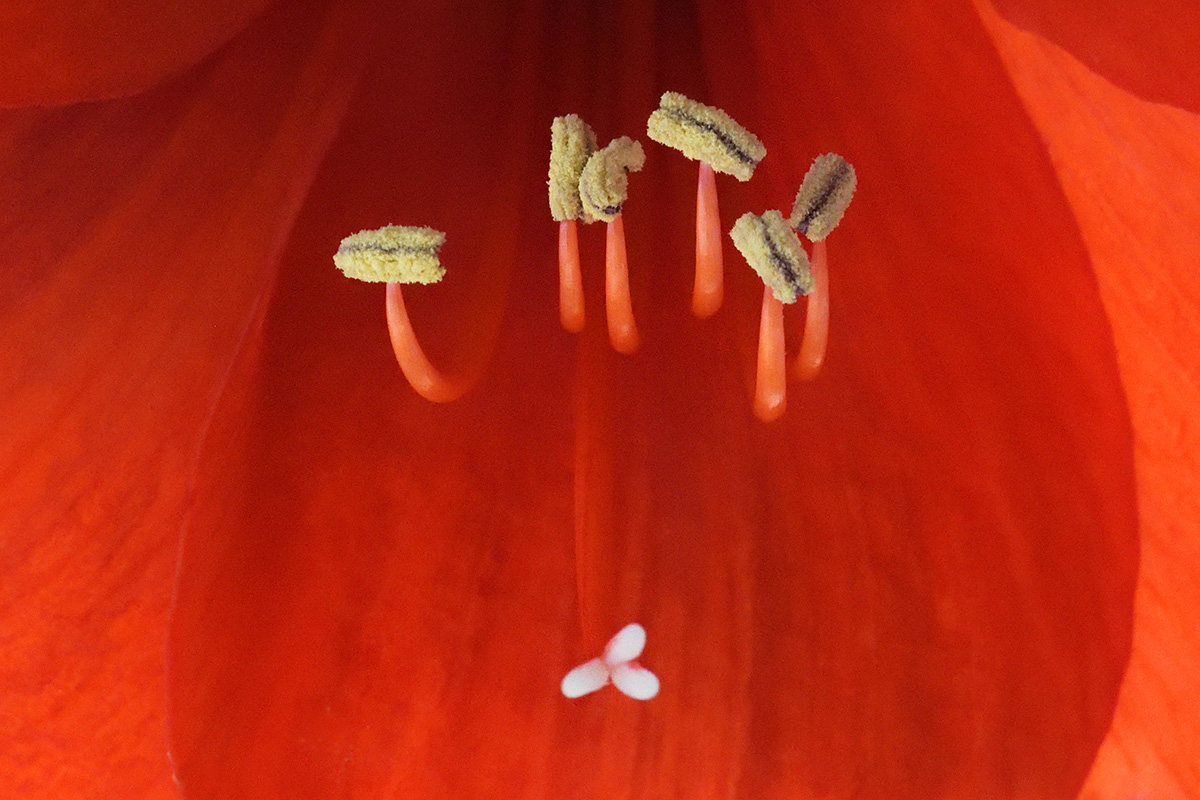‚True’ Amaryllis, a small genus of flowering plants, consists of two species: Amaryllis belladonna and Amaryllis paradisicola. They are native to South Africa and typically blossom there around March. The large bulbs of today’s ‘commercial amaryllis’ are Hippeastrum vittatum hybrids developed from Peruvian Andes species.
Amaryllis and Hippeastrum are bulbous plants. With large, colorful blossoms, they are often grown in winter, as they can be forced to bloom indoors easily. The anatomy of the plants is classic, with roots, stems, leaves and large flowers that visibly display the reproductive parts of the plants.
Amaryllis and Hippeastrum flowers possess both male and female reproductive organs, visible in the center of the bloom [see today’s photograph]. The male organs are the stamens, which hold anthers [six anthers are shown here in the upper half of my image] that produce pollen. The pistil is the female portion of the plant, which projects directly from the center of the flower, and consists of three parts — the ovule, the style and the stigma [one stigma can be seen in the lower half of the image]. Pollen from the anthers, when transferred to the stigma, travels down the style and into the ovary to fertilize the seeds. Once fertilized, the flowers die, and the plants form large, bulbous pods filled with leathery, black seeds.
